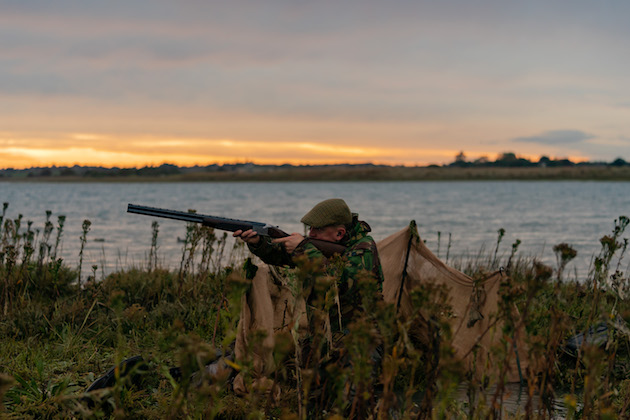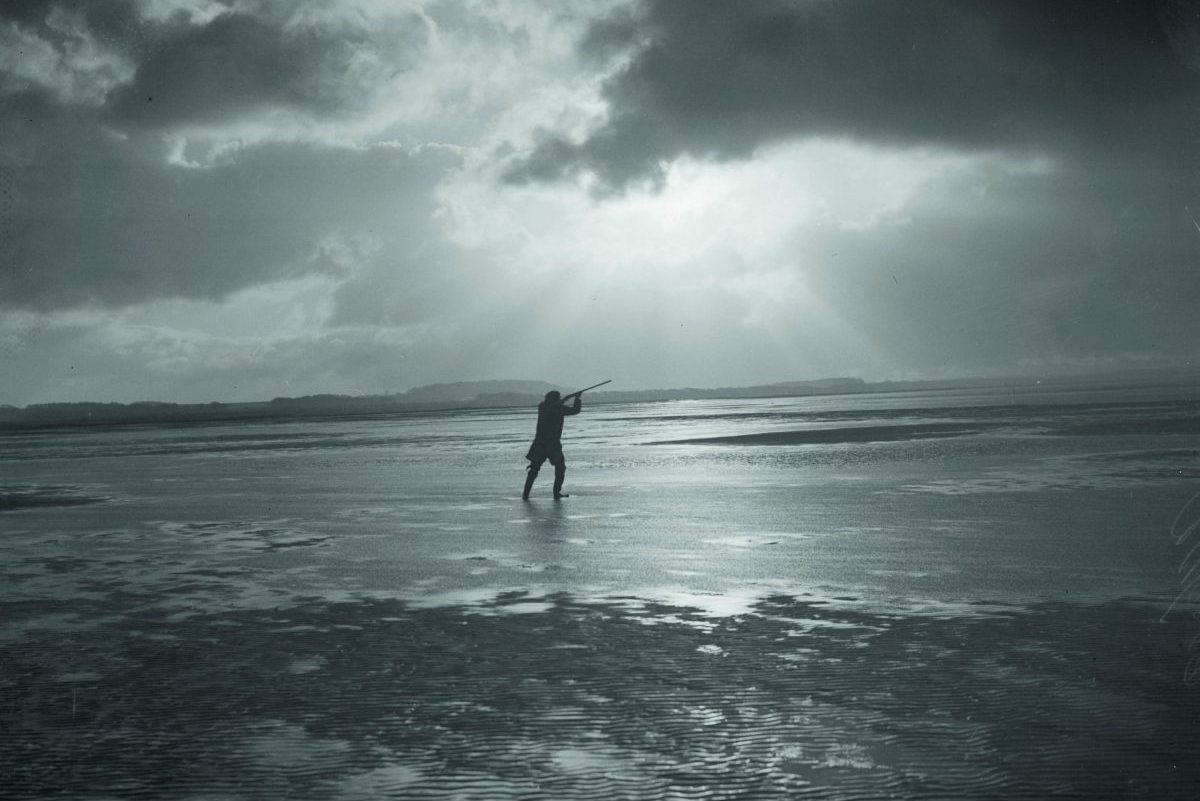Wind, wigeon and heritage
Simon Garnham salutes the season starting in earnest with a grand day on a piece of marsh shot over by a renowned fowling forefather

At last, the wildfowling season has begun. My jacket steams in the shed, waders are caked in mud, a faint odour of samphire and salt lingers over the computer as I type. Best of all, truly wild birds hang in the garage. The wait has ended. Rain has arrived. A northerly air stream and a full moon have coincided.
Until now, forays on to the foreshore have been for local duck. I’ve been lucky with a Canada and one or two corn-fed mallard. But the whee-ooh of the wigeon has been missing. The arrival of these wonderful little birds marks a real change in seasons. When I heard them and saw the barometer dropping, it felt right to contact Ed Avery so we could mark the changing of the seasons as we have for more than 30 years.
I don’t like shooting with everyone. I didn’t enjoy the company of the farmer who couldn’t co-ordinate his safety catch and his trigger. He loaded as he arrived at the peg and promptly shot a hole in his game bag.
Then there were the young Dutch officers with whom I shared a live-firing range whose drill at the end of each range was to fire into the air in a ‘Lebanese unload’. We Brits felt rather on edge as we carefully removed magazines and ‘eased springs’ while the evening sky lit up with Dutch tracers 20 yards to our left or right.
Besides these two exceptions, I do enjoy shooting in company. And no companion is better than Ed.

Ed Avery setting up the decoys from the boat as he and Simon mark the changing of the seasons again
Wild expanses
Our meeting point was on the far side of the sea wall. The wild expanses of Essex marsh so beloved of James Wentworth Day and Arthur Ransome lay before us. Ed was packed and ready — outboard fixed, and Rex and Rosie the Labradors slotted between the decoys and the oars.
The tide was high and we had about two hours until darkness. A thick layer of cloud, blustery wind and patchy drizzle meant our decoys wouldn’t shine and we could wear waders without fear of drowning in sweat. The motor fired first time and we were on the grey waters, wending our way through a maze of creeks.
Common seals watched us pass with huge black eyes. Dunlin, redshank and plover lifted and fell like leaves in the wind. The water ran quickly beneath us and only once did we churn up the oozy east coast mud. As distant houses began to light up and the grey sky in the west turned salmon pink, Ed nudged the boat into ‘Teal Crescent’, I slung out the kit and he set up a line of assorted decoys.
Whereas I have become a master of the swing-and-hope school of shooting, Ed is an exceptional proponent of his craft. I might try my famous imitation of a 1950s policeman’s whistle in the vain hope that it sounds like a wigeon or a teal. Ed, on the other hand, can talk in the birds from distances I can’t even see.
Despite being capable of shooting three teal out of most bunches, he would always rather see someone else enjoying their shooting than wield the gun himself. He unfailingly volunteers to take new members on to the marsh at club meetings, and once — when the beaters’ wagon died on my little driven shoot — he beat a long partridge drive almost single-handedly, using some skilful dog work and a very fast walk.
Goose skeins
I’ve also seen him call four separate skeins of geese over a novice without a single bird being harmed, and remain cheerful throughout.
Tonight was different. The dropping tide and fading light meant we both needed to work with some urgency. It had been a long time since either of us had been well out on to the marsh. Birds were on the move. I slung up a hessian hide while Ed sorted the decoys. I used reeds from the marsh to break up the shape and as we worked we watched while a pack of four mallard circled a distant pond across the marsh and away over the sea wall.
Jobs hurriedly completed, we hunkered down. A chattering quack drew the birds’ attention and they turned in our direction.
We pushed ourselves into the mud; the ducks had clocked the decoys. Time stood still as they came and came. Perhaps it was the exertion of mud jumping but my legs twitched as the birds approached — a sure symptom of goose fever.
Then, just as they were on the edge of range, something spooked them. Ed jumped up and fired twice. They seemed unaffected, turning powerfully back towards the setting sun. Then one seemed to dip almost imperceptibly. While the others climbed, it began a steady descent to land at a bend in a creek some 100 yards to our north.
Mallard and teal
The shot had lifted a pack of mallard and teal and both of us called. They, too, responded well. There were perhaps 40 or 50 birds and we once more pushed ourselves into the samphire and sea purslane. Closer they came, 50 yards up and heading from behind us into the decoys.
Before they set their wings to land, they saw us and flared. A mallard peeled out of the pack then dropped to my first shot and Ed, too, connected. A young drake naively failed to realise the danger and kept coming with webbed feet splayed and wings wide to slow his descent, while the rest of the pack took evasive action. Though I was now thigh deep in mud, a flick and twist of the gun was enough to connect hard with one wing and he spun heavily into the decoys to my second shot.
Steel shot wildfowling cartridges review
Steel shot wildfowling cartridges: Shooting Super Magnum cartridges is now a reality on our foreshores. Tom’s a fan of them…
Gun buying guide: Wildfowling
Bill Elderkin selects three of the best guns for wildfowling this winter.
Wildfowling for beginners
An essential guide to getting started in this challenging sport
Avocets
Ed set off at high speed to gather in the distant fallen bird and I picked the mallard to our front. Rather ridiculously a greylag swam past only 80 yards from the action, as though oblivious, and a beautiful flight of a dozen avocets drifted along the line of the creek equally unperturbed.
The two distant birds took Ed some time to find. Somewhat selfishly I settled back behind my hide and squinted into the sunset while he worked his dogs and broke into a sweat creek-leaping. Then came the unmistakeable bullet forms of a pair of wigeon. They headed straight into the decoys, needing no whistle to entice them.
For a glorious moment I thought I’d got both with one shot as they crossed in front. However, the female powered away as the male somersaulted to my left and I couldn’t stretch far enough to get off the second barrel. Ed reappeared and Rex, who is the strongest and boldest of our dogs, made the retrieve in water that was now dropping and running powerfully.

Ed Avery’s yellow lab Rosie retrieves a mallard, picking it skilfully from among the long marsh grasses
It was a good moment to end and, as if to confirm it, a spectacular rainbow looped over the distant sea. Had we stayed until darkness we might perhaps have added to the bag but we would also have had to push the boat through stinking gloop for the majority of the homeward trip. Discretion being the better part of valour, we hauled in the decoys, bundled gear back into the boat and made for the safety of the shore.
Fellow fowlers were having some success as we headed home, slower now against the tide. A huge skein of Canadas was met by a pair of shots from the sea wall and friend and local engineer Gav Mortlock had also been among the teal, exchanging yarns with us.

Time for home
My fingernails are now ringed with the thickest of Essex mud and probably need another scrub. The gun has been cleaned but will need rechecking tomorrow. There’s some plucking and gutting to be done. But these are not chores, they are blessings. The wigeon have arrived and so has the weather.











